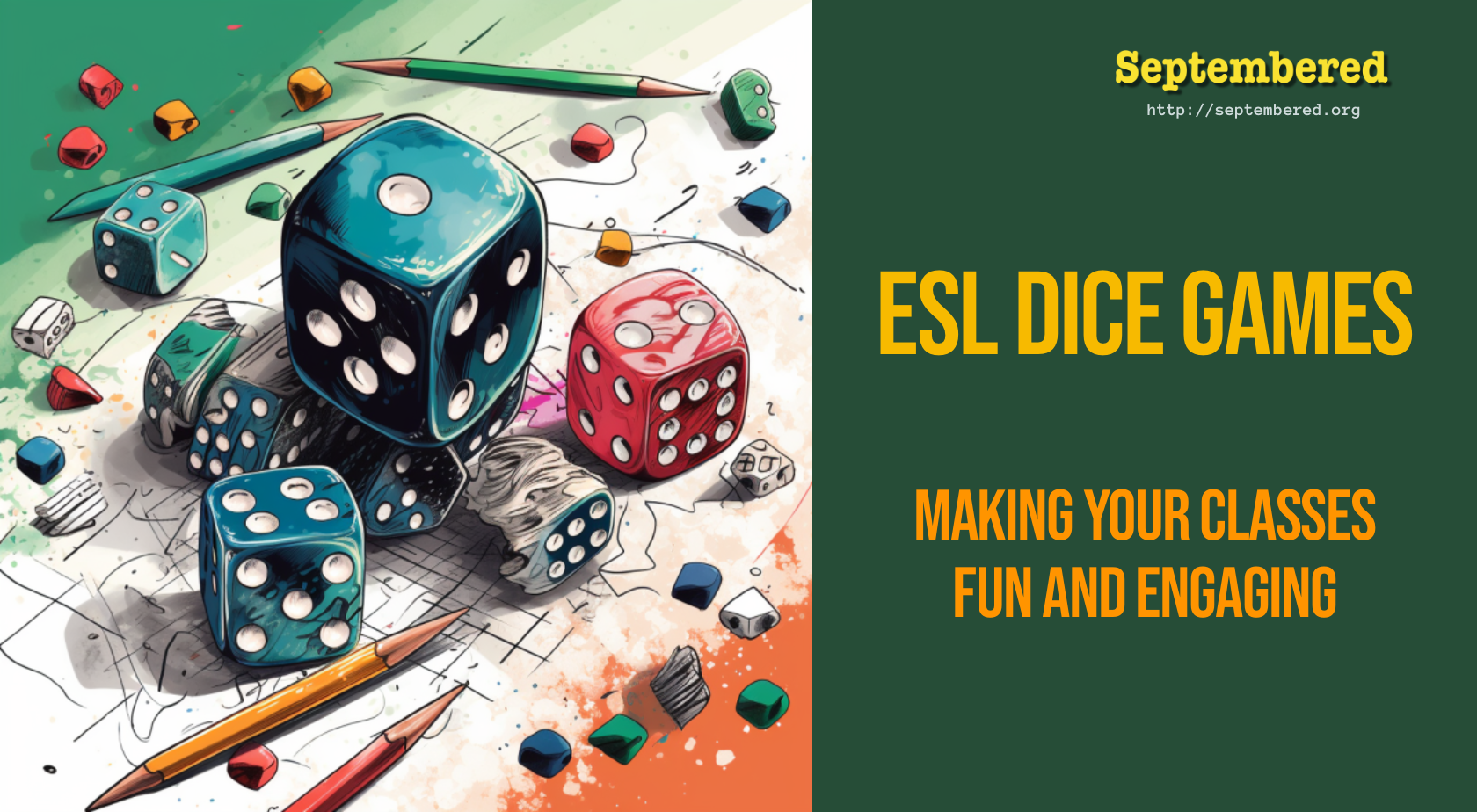Click the button to roll the dice.
Dice games are a great way to make your classes more enjoyable and fun for you and the students.
Dice Games
When we want to create randomness, the first thing that comes to mind is to roll a dice. Rolling a dice will create movement. Movement creates a focal point for the other students to watch. This, in turn, helps with attention.
This can be messy if you haven’t thought through your games first. If you hand the dice over, the kids will throw it around the room. Once you give them something to play with, they won’t listen to you, and you have lost control. You will need to teach the game before you hand over the dice.
The Basics
What Is a Dice?
Do your students know what a dice is? As adults, we sometimes forget that the students don’t know everything we do. It is good practice to always start small with them and build up. The first stage when picking up the dice is to ask them. “What’s this?” It is a simple win for them if they can answer this question. Sometimes, they can only answer in their native language. Other times, they will tell you what it is. Either way, you have them talking.
What’s on your dice?
Not all dice are equal. What is on your dice? Numbers, letters, images? The students’ next win is to call out what is on your dice.
I like to teach the students how to read the dice first. I want to know that they know each side. This will be useful if I need them to match the dice symbol with a flashcard, question or object in the classroom.
Dice With Dots

Remember that our younger learners haven’t learnt the dot patterns yet. I like to get the students to tell me what is on the side that I am showing them. But first, they need to know what I want them to do.
- Start with ⚀.
Encourage the students to count with you as you point to the single dot and say “one”. - Rotate the dice and find ⚁
Again, have the students count with you. “One, two.” Try this one a second time. Either don’t say anything as you point at the dots or say “one” with them and let them answer “two” on their own. - Do this pattern for the remaining sides. Keep encouraging them to count the dots.
Game Idea
Lay out six flashcards in a row. Let students come to the cards and roll the dice. Ask them to count the spots and then jump down the line that many times. If the student rolls a three on the dice, they should jump to the third flashcard and say that word.
Dice With Numbers

To teach the student how to read a dice that has numbers on it, you can use a very similar procedure to the one above. Start with the number one and ask the students to call out the numbers on the dice. You can use the dice to practice counting forwards and backwards. Think of it as a 3d flashcard.
Game Idea
Draw six boxes on the board with a keyword, sentence or question within each box. Students take turns rolling the dice. They should match their roll with the corresponding box and say what is in it.
Dice With Pictures

Dice with pictures are often dice you have made yourself, like this Winter Movement Dice for Kids. Teaching the students how to read this type of dice is the same as using flashcards.
- Show the students the first image and encourage them to call out the word.
- Do this for each of the sides of the dice.
Game Idea
You will need a dice with greetings like this one for this game.
Ask the first student, “How are you?” and hand them the dice; they should answer with whatever the dice lands on. They can then ask the next student, hand that student the dice, and so on. You can later ask them how they are without the dice to see if they have changed their answer.
Download the How Are You Dice template here or click the image.



Leave a Reply